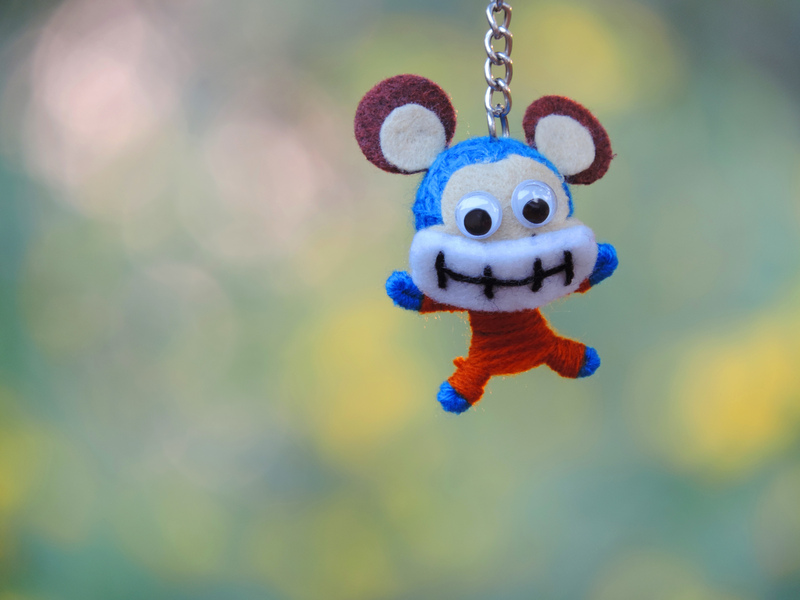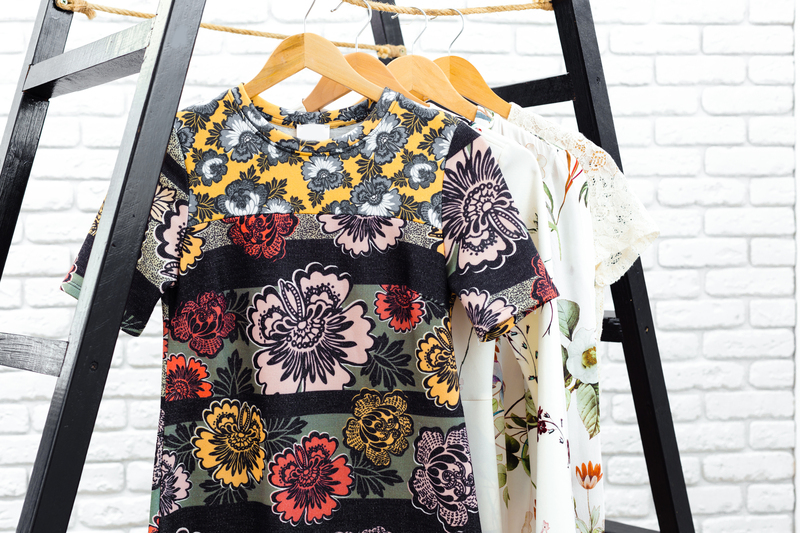The Art of Upcycling: How to Recycle Your Clothing
Posted on 13/09/2025
The Art of Upcycling: How to Recycle Your Clothing
Are you looking for creative, eco-friendly ways to refresh your wardrobe? Discover the fascinating world of clothing upcycling! In this comprehensive guide, you'll learn how to recycle your old clothes, give them a new life, and reduce textile waste--one stitch at a time.
Why Upcycling Your Clothing Matters
The fashion industry is the second-largest polluter in the world. According to the Environmental Protection Agency (EPA), millions of tons of textile waste end up in landfills annually. Traditional recycling practices only address a fraction of this issue. Upcycling clothes--the process of transforming old or unwanted garments into something new and useful--not only helps the environment but also fuels creativity and self-expression.
- Reduces landfill waste: Upcycling extends the life of clothing and minimizes environmental impact.
- Decreases demand for new resources: Less energy and water are used when creating new items from existing materials.
- Supports personal style: Unique upcycled pieces reflect your personality and set your wardrobe apart.
- Saves money: Repurposing what you already own or thrift is far more cost-effective than buying new items.

What Is Upcycling?
Upcycling is the creative reuse and transformation of existing textiles into higher-value products, instead of discarding them. Unlike simple recycling (which often results in downgrading the material quality), upcycling preserves or even enhances the original fabric's value. Think of turning a worn-out denim jacket into a stylish tote bag, or reshaping old t-shirts into trendy crop tops.
Upcycling vs. Recycling Clothing: What's the Difference?
- Recycling clothing: Often involves breaking down fabrics into fibers for industrial use, which can reduce the quality of the material.
- Upcycling your clothes: Means creatively reusing the clothing in its existing form to create something new or improved, minimizing waste and maximizing originality.
How to Start Upcycling Your Clothes
Ready to begin? Here's your step-by-step guide to upcycling and recycling your clothing in style:
1. Assess Your Wardrobe
Examine your closet and pull out items you no longer wear due to damage, fit, or style. Be honest about what you really need and what you can repurpose. Don't underestimate the potential of even the most outdated piece--it's raw material for your next creation.
2. Get Inspired
Upcycling inspiration is everywhere. Scour Pinterest, YouTube, and Instagram for creative clothing upcycling projects. Look for:
- Upcycled denim jeans turned shorts or skirts
- Patchwork creations from fabric scraps
- Old shirts remade into pillowcases
- Applique and embroidery add-ons
3. Gather Tools & Materials
You don't need to be a master tailor! Some basic tools for most clothing recycling projects include:
- Scissors (fabric scissors are ideal)
- Measuring tape or ruler
- Needle and thread or sewing machine
- Fabric glue or fusible bonding tape (for no-sew projects)
- Decorative trims: buttons, lace, patches
- Iron, marking chalk, and pins
4. Start Simple--No-Sew Clothing Upcycling Ideas
Not ready for advanced tailoring? No problem. Try these easy upcycling projects to recycle your clothing without sewing:
- T-shirt tote bag: Cut off the sleeves and neckline; turn inside out and tie the bottom hem.
- Cut-off shorts: Turn worn jeans into shorts; fray the edge for a rugged look.
- Scarf from a blouse: Cut an old blouse into strips and braid or knot for a unique scarf.
- Infinity scarf from a sweater: Cut below the arms and sew the ends together or secure with fabric glue.
5. Advanced Upcycling Clothing Techniques
Feeling adventurous? With some practice, you can experiment with:
- Patchwork and quilting: Use small fabric scraps to create stunning patterns for jackets or bags.
- Garment reconstruction: Combine different clothes into one-of-a-kind pieces--like mixing shirt sleeves with a dress body.
- Creative embellishments: Add lace, applique, embroidery, or fabric paint for a custom finish.
- Dyeing and print: Refresh faded garments using fabric dye, tie-dye techniques, or screen-print designs.
Popular Upcycled Clothing Project Ideas
Upcycled Denim
Denim is incredibly durable and perfect for upcycling. Transform old jeans into bike bags, aprons, placemats, organizers, or stylish jackets with patchwork and embellishments. The possibilities with denim recycling are endless!
T-shirt Upcycling
Have a drawer full of forgotten t-shirts? Repurpose your tees by turning them into reusable shopping bags, braided rugs, pillow covers, or even kid's jumpers. A t-shirt can also be cut and twisted into headbands or pet toys.
Shirt and Sweater Transformations
Cut the sleeves off old flannel shirts to create boho vests. Transform oversized sweaters into cozy hats, leg warmers, or mittens. Clothing upcycling lets you turn imagination into reality.
Accessories and Beyond
Small scraps from your wardrobe can become:
- Colorful fabric earrings or necklaces
- Bohemian bracelets and headbands
- Decorative pouches or wallets
- Quilted patchwork bags
Best Practices for Recycling and Upcycling Your Clothing
Choose Quality Over Quantity
For successful clothing upcycling, select fabrics that can withstand reworking. Natural fibers like cotton, wool, and linen generally perform better than synthetics. Quality basics are more versatile and last through multiple upcycling projects.
Wash and Prepare Clothing
Always wash and dry garments before upcycling. Remove stains or odors to ensure your new project starts fresh.
Plan Before You Cut
Sketch your design or map it out before making the first cut. Measure twice so you don't waste valuable fabric. If you're new to clothing recycling, start with small, low-risk items until you gain confidence.
Practice Makes Perfect
Don't be discouraged by early mistakes. Upcycling is an art--each piece will teach you new skills and techniques. Experiment, learn, and have fun with the process.
Upcycling Clothing for Kids: Fun and Eco-Conscious!
Kids grow out of clothes quickly. Instead of constantly buying new, upcycle children's clothing:
- Turn baby onesies into t-shirt dresses or bibs
- Make patchwork quilts from beloved outgrown garments
- Repurpose worn jeans as sturdy play shorts or art smocks
Get your kids involved in these upcycling projects--they'll learn valuable lessons about sustainability while unleashing their creativity!
Sell or Donate Your Upcycled Clothing
If you produce more upcycled clothing than your wardrobe can handle, why not share it with others? Sell your creations on Etsy, at local craft fairs, or through a social media shop. Many nonprofits gladly accept upcycled items--some even specialize in distributing handmade goods to those in need. Your recycled clothing could spark someone else's appreciation for sustainable fashion!
Troubleshooting Common Upcycling Challenges
What if I Make a Mistake?
Don't worry! Most upcycling errors are fixable. Consider patches, extra trims, or creative repairs. Even a "mistake" can lead to an unexpectedly amazing result.
Where Do I Find Inspiration?
Follow upcycling clothing blogs and social media accounts. Join sustainable fashion communities for support and ideas. Attend workshops or online classes to enhance your skills. There's no shortage of ideas--sometimes, your best inspiration comes from seeing what others have achieved.
Environmental Impact of Recycling Clothing
By mastering the art of upcycling, you're contributing to a circular economy--one where resources are reused, waste is reduced, and creative solutions shine. Here are some profound environmental benefits of recycling your clothes:
- Reduces carbon emissions: Fewer new resources are extracted and processed.
- Conserves water: The textile industry is a major water consumer; reusing garments reduces this impact.
- Decreases landfill waste: Upcycled clothing stays out of landfills for years longer.
- Supports local economies: Small upcycled fashion businesses create jobs and foster community creativity.
Every garment you upcycle moves us a step closer to a more sustainable world.
Top Tips to Make Your Upcycling Journey a Success
- Start small--try easy projects like no-sew bags or accessory upcycling.
- Mix and match colors and patterns freely. There's no right or wrong in upcycling design.
- Share your upcycled creations online to inspire friends and family.
- Look for clothing swap events and sustainable maker markets for materials and ideas.
- Remember--it's not about perfection, but about creativity and sustainability!

Resources for Upcycling Your Clothing
- Fashion Revolution - Global movement advocating for ethical and sustainable fashion.
- Refashionista - Blog featuring hundreds of simple, clever upcycling tutorials.
- YouTube - Channels like WithWendy, Coolirpa, and BlueprintDIY are packed with instructional videos for beginners and pros alike.
- Local makerspaces or community centers often offer upcycling workshops.
Conclusion: Embrace the Art of Upcycling
The art of upcycling clothing is a rewarding blend of imagination, skill, and eco-consciousness. As you recycle your wardrobe into innovative new pieces, you embrace sustainability and redefine what fashion can be. Whether you're breathing new life into a faded shirt, transforming jeans into art, or inventing totally new styles from thrifted finds, you're part of the global movement toward responsible fashion.
So, gather your old favorites, unleash your creativity, and start your upcycling journey today. By learning how to recycle your clothing in artistic ways, you're helping to save the planet--one stitch, patch, and design at a time.
Happy upcycling!

 020 3859 5580
020 3859 5580 020 3859 5580
020 3859 5580





 House Clearance
House Clearance Rubbish Collection
Rubbish Collection House clearance in London has never been easier, as Junk Removal Services can take care of your every need. From individual house junk...
House clearance in London has never been easier, as Junk Removal Services can take care of your every need. From individual house junk... With Junk Removal Services you can be confident that you’ll receive the most professional and affordable rubbish collection service within the London...
With Junk Removal Services you can be confident that you’ll receive the most professional and affordable rubbish collection service within the London...





